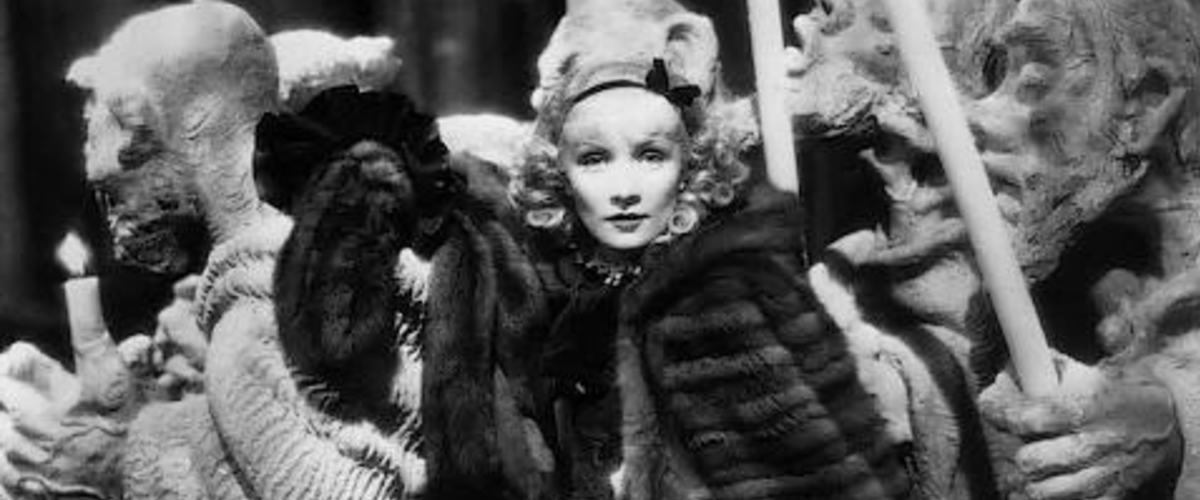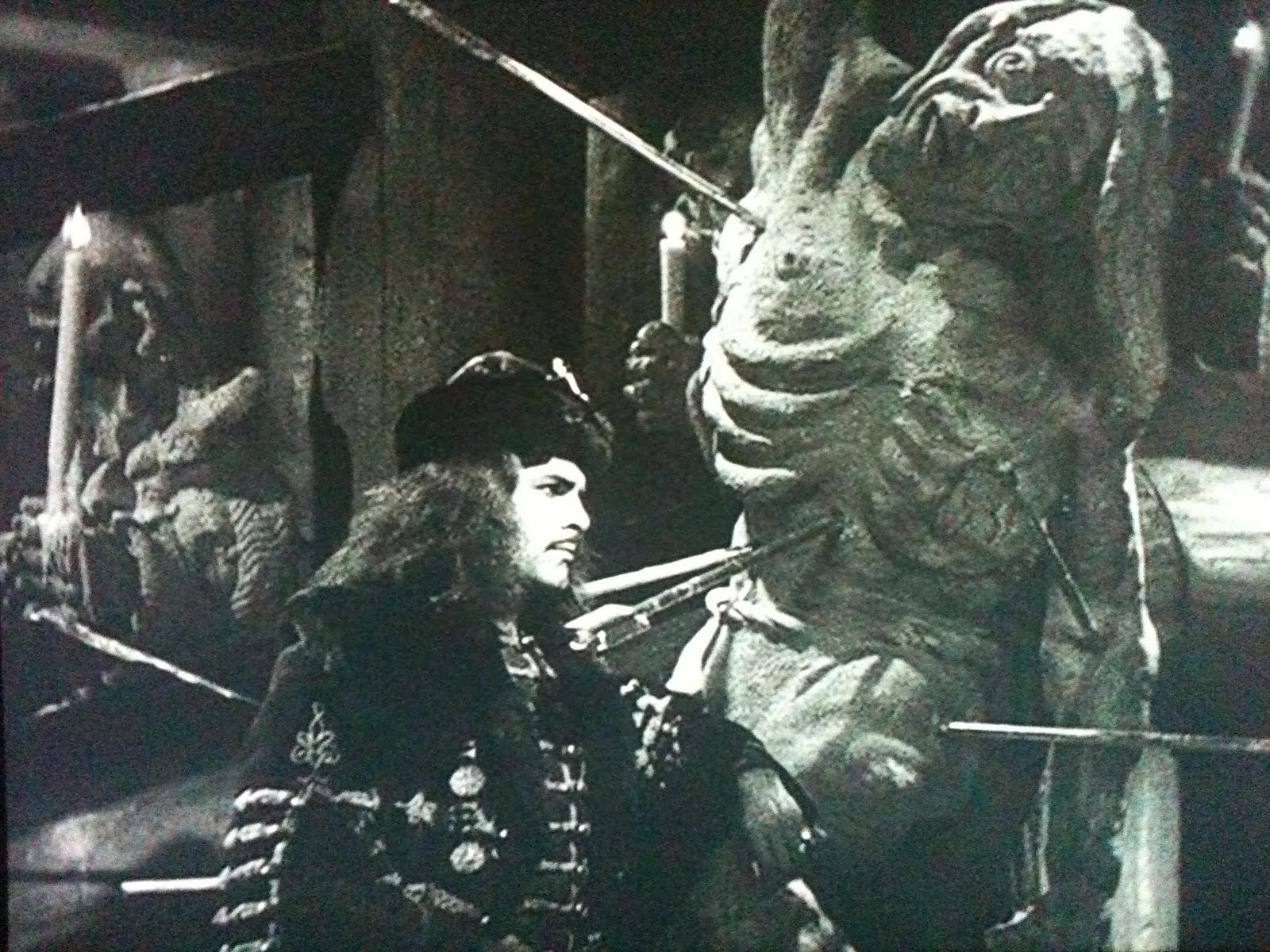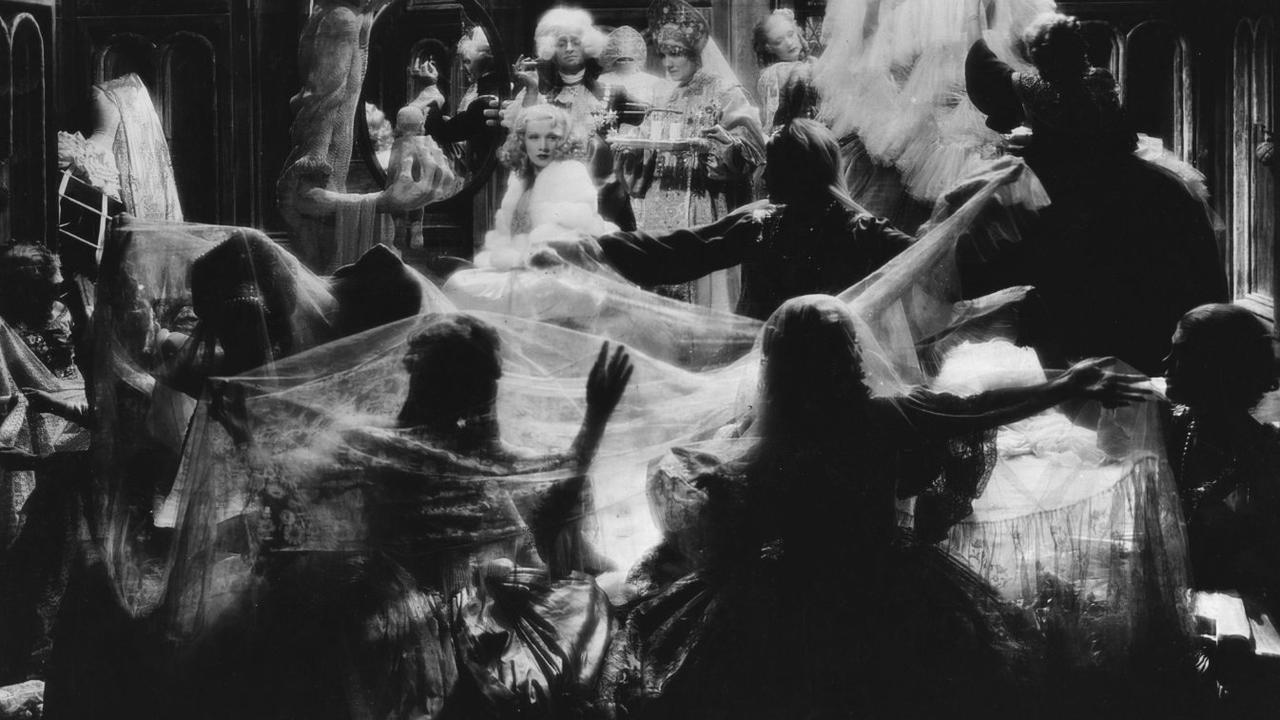In a rather hilarious reflection on Josef von Sternberg’s The Scarlet Empress, the sixth of his seven films starring Marlene Dietrich, historian Alex von Tunzelmann is unimpressed with the history on display.
The reign of Empress Elizabeth (1741-1762) didn’t include nearly so much torture as the first few frames of The Scarlet Empress would indicate, and the Iron Maiden wasn’t even invented for another 100 years! The actual “Count Alexei” was way less hot. It is pretty unlikely that Catherine The Great fucked the entire army, and almost definitely not her horse. Generally speaking, the Russian palace wasn’t quite as festooned with gargoyles and freakish demon statues.
Entertainment grade: B
History grade: D-

All of which; fair.
But von Tunzelmann’s tongue is firmly in cheek, anyway: of course The Scarlet Empress is bad history, full of anachronisms that speak more to Sternberg’s vivid imagination than to anything resembling historical realism. In fact, there are only a few points in this ostensible period piece that even seem to exist in a recognizably human world, an irony typical of the director. In Sternberg’s hands, the rule of Catherine The Great is an excuse for every visual excess and barely-sublimated perversion he can cram into the frame. In short:
Verdict: The Scarlet Empress isn’t really aiming for credibility so much as providing Sternberg with an excuse to film bondage, bosoms, fur coats, schlocky expressionist sets and Marlene Dietrich’s face peering through bits of gauze.

And how. But that verdict has the benefit of hindsight. While The Scarlet Empress, and Dietrich herself, are now part and parcel of camp iconography, contemporaneous reviews were both less charitable and more eloquent. The New York Times opined:
Since the verdict has to be in the negative, let it be pronounced quickly. For Mr. von Sternberg, having sacrificed story, characterization and life itself to his own hungry and unreasonable dreams of cinema greatness, has at the same time created a barbaric pageant of eighteenth century Russia, which is frequently exciting. His scenes are like the vast, tortured world of another William Blake. In the great halls and chambers of the the imperial palace, weird figures of enormous height stand sculptured in attitudes of suffering. Gargoyles with nightmare faces and twisted bodies support mirrors and candelabra. There are panels of saints and martyrs in what is evidently the Byzantine style, and ikons, gigantic iron doors and clusters of candles. Five emaciated martyrs of tremendous size guard Elizabeth’s bed. The imperial treaure chests bear the sculptured bodies of saints in high relief on their covers. The imperial throne is shaped in the form of the avenging double-eagle of the Russias. There is a mirror curved into a horned and winged gargoyle and a chair formed in the image of a martyred saint, to accommodate the sitter in the saint’s lap.


That 1934 review isn’t wrong to complain about the lack of narrative cohesion. Dietrich struggles mightily to pull off her role in the early parts of the film, exuding a forced innocence that makes it perfect for camp: no one could fully believe her as a wide-eyed waif. There’s a distinct sense of relief when her Catherine graduates to self-aware femme fatale, rejecting the strictures of an arranged marriage to a moron and angling in on power herself. Sternberg’s allegiances are not too complicated; his theme, summed up by Robin Wood: “How does a woman, and at what cost, assert herself within an overwhelmingly male-dominated world?”
Still, that Dietrich doppelganger — innocent ingenue and charismatic, amoral ruler — underwrites the entire structure of The Scarlet Empress. Sternberg isolates her in the frame at every opportunity: completely on her own, gauzy, with a candle intimating danger or deception; suspended in the image between hellish gargoyles; hemmed in by the court.

The Scarlet Empress is a showcase for excess, but also surprisingly intimate. Dietrich is fetishized in many ways, but the primary focal point is less prurient than some comments suggest: her face. Sternberg is right in line with Dreyer 6 years earlier: “Nothing in the world … can be compared to the human face. It is a land one can never tire of exploring.”
For all its outsized spectacle and elaborate set design, The Scarlet Empress finds itself again and again curious about this one woman in a sea of men, and how she gets by. The nightmarish brutalism of the architecture sets the stage for intimate moments, amid all the vaguely S&M-ish trappings of the aristocracy and the looming, degenerate horror dread of autocratic rule.
Those critiques still exist here amid the decadent splendor, even if Sternberg gleefully substitutes faithfulness to fact for an obsession with flights of weird, auteurist fancy. Of course he was reaching for “cinematic greatness” — he had Marlene Dietrich, a handful of very particular fixations, and the ability to make 1,000 terrifying gargoyles. What would you do?
Soon her betrothed Peter the Great (Sam Jaffe) enters, a grinning, simpering simpleton dismissed by his mother as a “half-wit.” His principal royal duty is to produce an heir, something he is apparently unequipped to do, as von Sternberg hints in a scene where Peter is so desperate for a glimpse of his wife that he drills a spy hole through the eye of a mosaic in his mother’s bedroom, which I think is a Freudian trifecta.

